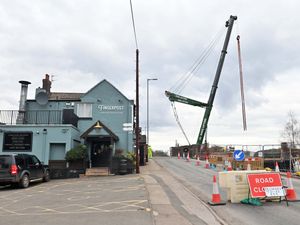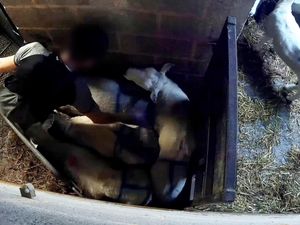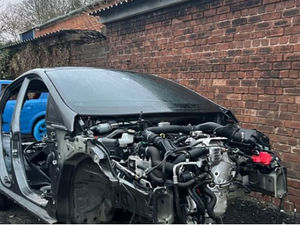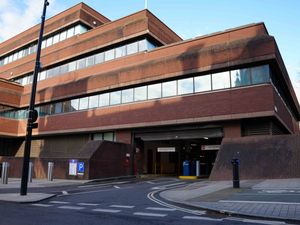40 years since end of the Vietnam War
The situation was desperate and those on the helicopter used their fists and feet to prevent people climbing onto the craft and overloading it.
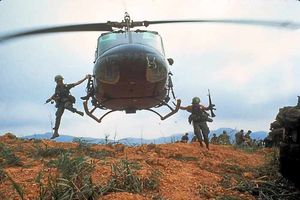
Realising it was now or never, the pilot eased the helicopter into the air, leaving the screaming, desperate, frightened crowd behind; there would be no more flights.
It was 40 years ago today on April 30, 1975, and the end of American involvement in Vietnam was signalled by that chaotic scramble to escape from the roof of the US Embassy in Saigon.
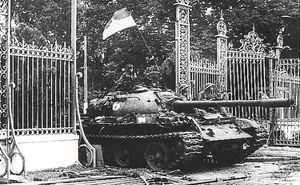
For hundreds of Vietnamese left behind on the roof and in the embassy building itself, the reality of their situation was clear.
The communists were pouring into Saigon as fast as the US was leaving, and anyone who had helped the Americans in any way could expect swift retribution.
John Evans, 79, from Telford remembers watching those final days of the American War in Vietnam on television.
Passionate about politics from a very young age, Mr Evans has strong views about US involvement in the war.
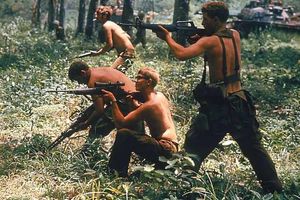
He said: "I can still recall the mad rush of people trying to escape Saigon as the communists approached. America should not have been involved in South East Asia, they were obsessed with fighting communism and ended up in situations they should have avoided.
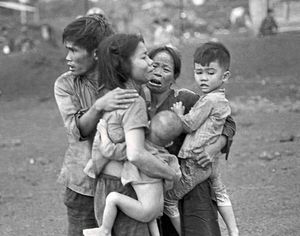
"I am so glad that our Prime Minister Harold Wilson, supported by Defence Secretary Dennis Healey, kept British troops out of the conflict. "
America became involved with Vietnam during the latter stages of World War Two, when it supplied weapons and training to guerillas fighting the Japanese.
Once the Japanese were defeated, the guerillas demanded independence and
in 1954,a peace agreement divided Vietnam into two, communist North Vietnam and democratic South Vietnam.
Fearing a communist takeover, the Americans began to pour money and arms into South Vietnam to secure the country.
Warning: This footage may contain graphic images
When John Kennedy became President in 1960 there were about 800 US military personnel in South Vietnam rising to 11,000 by 1962. But US forces weren't just training and advising, they were taking part in combat missions and under the presidency of Lyndon Johnson the war escalated dramatically.
In 1968 the number of US military personnel in Vietnam reached its peak of over 540,000.
America's desire to get involved militarily in South East Asia was driven by the Cold War and a belief that they had to stand up to communism.
Waves of B-52 bombers dropped their deadly cargo onto not only Vietnam, but Cambodia and Laos, in a bid to stop the flow of weapons and material into Vietnam. By the end of the war a total of seven million tons of bombs had been dropped on those three countries.
America also unleashed Agent Orange, a defoliant intended to strip away the greenery from areas the north Vietnamese forces operated in, depriving them of cover.
But agent orange had cruel side-effects, leaving children born with deformities.
America always claimed the moral high ground, saying the war was a battle between freedom and tyranny, but the reality was never that black and white.
Protests against the war became commonplace as the anti-war movement grew stronger and more vocal. Returning war veterans publicly decried the conflict and threw away their medals in disgust.
The media helped drive the public away from the war with daily, uncensored TV coverage fed into American homes.
Repeatedly told they were winning the war, the American people began to lose faith in their government and their military. Eventually an agreement to end the fighting was reached in January 1973 and the last US military unit left Vietnam in March of that year.
America withdrew and the communists began their march towards Saigon.
On 30 April, 1975 the South Vietnamese government surrendered and the remaining Americans escaped in a series of frantic air and sea-lifts. The two halves of Vietnam were officially united as the Socialist Republic of Vietnam on July 2, 1976.
Over 58,000 American soldiers died in the conflict, but that figure is dwarfed by the number of civilians who died, estimated at between one and three million.

